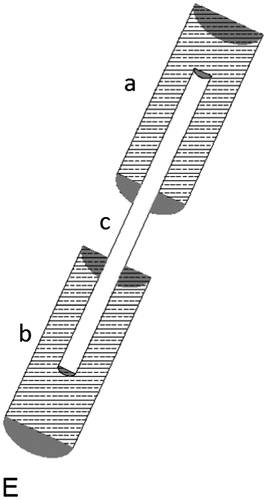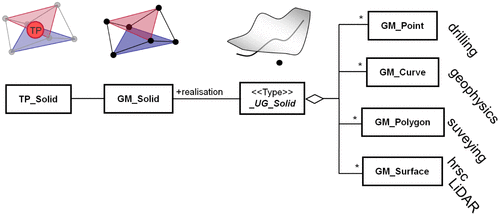Figures & data
Figure 1. Sediment cascade of the two subsystems Wall and Talus. Following the notation of system theory (Citation21), no geometry and time is represented (from Ref. (Citation22)).
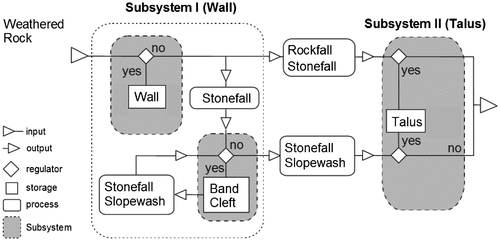
Figure 2. The abstract class _Geoprocess, altering, i.e. creating new instances of the class _State. (modified, see Ref. (Citation23).
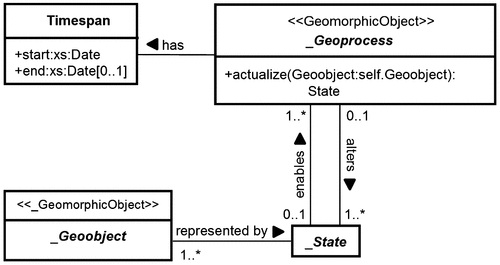
Figure 3. Representation of a sediment cascade in 2D. Sediment sources are interpreted as the “from-node” and sinks as the “to-node”.
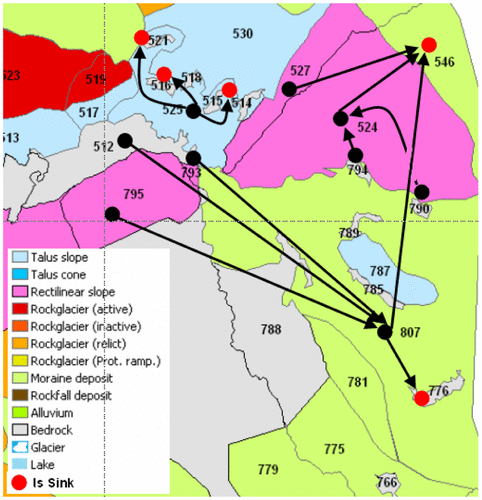
Figure 4. 3D topological relationships of two landforms within a geomorphic system (rf. Table
Table 1. Geomorphic description of topological relationships of landforms (rf. Figure ).
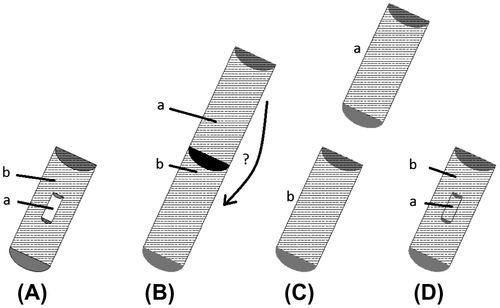
Table 1. Geomorphic description of topological relationships of landforms (rf. Figure ).
Table 2. Geomorphic description of topological relationships of three landforms (rf. Figure ).
Figure 6. Differences in the geometric modeling of (a) a natural (buried) feature and (b) a CityGML’s LoD1 building model.
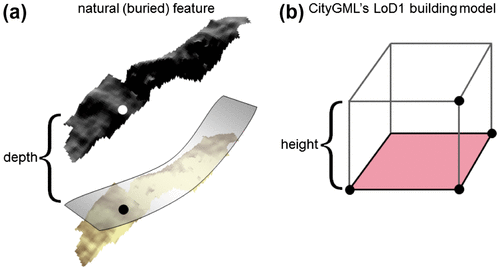
Table 3. Possible combinations of simple geometries to form a _UG_Solid.
